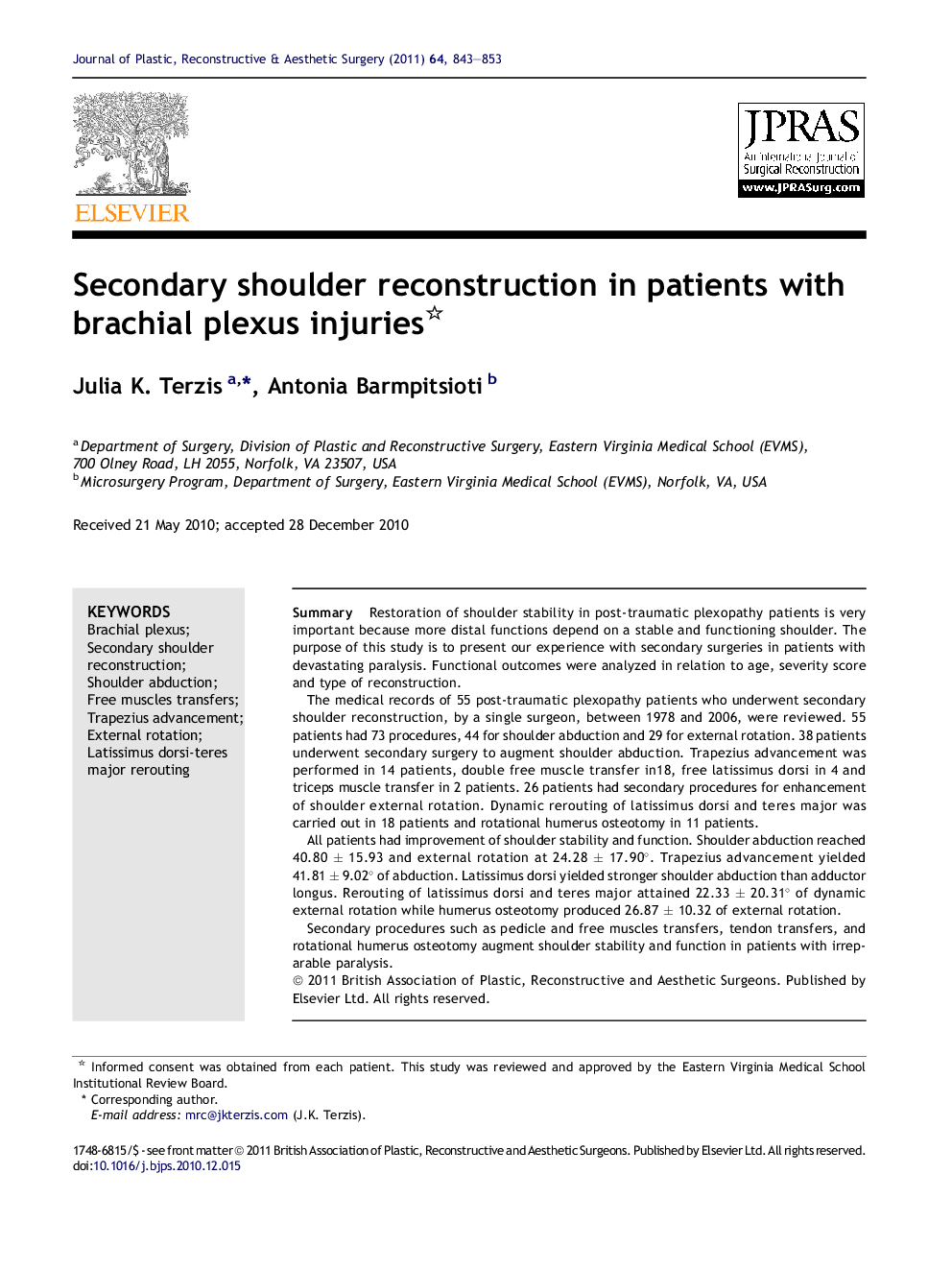| Article ID | Journal | Published Year | Pages | File Type |
|---|---|---|---|---|
| 4119164 | Journal of Plastic, Reconstructive & Aesthetic Surgery | 2011 | 11 Pages |
SummaryRestoration of shoulder stability in post-traumatic plexopathy patients is very important because more distal functions depend on a stable and functioning shoulder. The purpose of this study is to present our experience with secondary surgeries in patients with devastating paralysis. Functional outcomes were analyzed in relation to age, severity score and type of reconstruction.The medical records of 55 post-traumatic plexopathy patients who underwent secondary shoulder reconstruction, by a single surgeon, between 1978 and 2006, were reviewed. 55 patients had 73 procedures, 44 for shoulder abduction and 29 for external rotation. 38 patients underwent secondary surgery to augment shoulder abduction. Trapezius advancement was performed in 14 patients, double free muscle transfer in18, free latissimus dorsi in 4 and triceps muscle transfer in 2 patients. 26 patients had secondary procedures for enhancement of shoulder external rotation. Dynamic rerouting of latissimus dorsi and teres major was carried out in 18 patients and rotational humerus osteotomy in 11 patients.All patients had improvement of shoulder stability and function. Shoulder abduction reached 40.80 ± 15.93 and external rotation at 24.28 ± 17.90°. Trapezius advancement yielded 41.81 ± 9.02° of abduction. Latissimus dorsi yielded stronger shoulder abduction than adductor longus. Rerouting of latissimus dorsi and teres major attained 22.33 ± 20.31° of dynamic external rotation while humerus osteotomy produced 26.87 ± 10.32 of external rotation.Secondary procedures such as pedicle and free muscles transfers, tendon transfers, and rotational humerus osteotomy augment shoulder stability and function in patients with irreparable paralysis.
